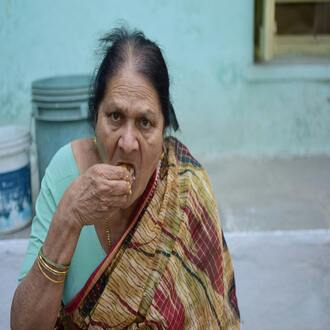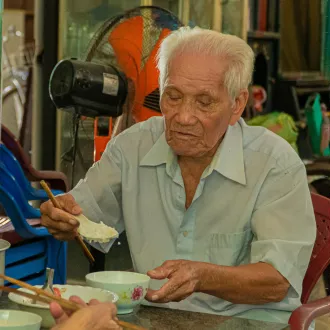Transcription Types of malnutrition
Malnutrition in the elderly is a serious problem that affects many older people around the world. As we age, our bodies undergo physiological and social changes that can influence our food intake and nutrient absorption.
In this session, we will explore in detail the most common types of malnutrition in the elderly, their causes, and how to effectively address this problem.
Primary Malnutrition
Primary malnutrition is the most obvious type of malnutrition and occurs when a person does not receive enough essential nutrients through their diet. In the elderly, this can be due to several factors:
- Loss of Appetite: Loss of appetite is common in older people due to changes in taste and smell, health problems and medications.
- Unbalanced Diet: A diet that lacks variety and does not include nutrient-rich foods can lead to nutritional deficiencies.
- Chewing Problems: Difficulties in chewing due to dental or jaw problems can limit food choices and caloric intake.
- Digestive Problems: Gastrointestinal problems, such as decreased gastric acid production, can affect digestion and nutrient absorption.
Secondary Malnutrition or Cachexia
Secondary malnutrition, also known as cachexia, is a type of malnutrition that occurs as a result of chronic disease, such as cancer, heart failure, or chronic obstructive pulmonary disease (COPD).
Chronic conditions can increase the body's energy and nutrient demands and decrease the ability to absorb nutrients, leading to weight loss and malnutrition.
Social Malnutrition or Food Marginality
Social malnutrition is a less recognized but equally important type of malnutrition in the elderly. This type of malnutrition occurs when an older person does not have access to adequate food due to social or economic factors:
- Lack of Economic Resources: Older people with limited income may not be able to purchase quality and varied foods.
- Social Isolation: Loneliness and social isolation can lead to a lack of motivation to cook or eat, resulting in insufficient food intake.
- Lack of Family Support: Lack of support from family members or caregivers can lead an older person to rely on processed or low-quality foods.
Mixed or Combined Malnutrition.
In some cases, malnutrition in the elderly may be a combination of several factors. For example, an older person with a chronic illness (secondary malnutrition) who also faces social problems, such as lack of family or financial support, may experience mixed malnutrition.
Strategies for Addressing Malnutrition in the Elderly
Identifying and addressing malnutrition in the elderly is critical to maintaining health and quality of life. Here are some key strategies:
- Nutritional Assessment: Regular nutritional assessment by a health professional can identify signs of malnutrition and nutritional deficiencies.
- Meal Planning: Planning balanced and varied meals that include nutrient-rich foods is essential.
- Social Support: Encouraging social connection and family support can improve motivation to eat.
- Health Care: Addressing chronic illnesses and underlying health problems is critical to preventing secondary malnutrition.
- Assistance Programs: Helping seniors with limited resources access quality food through food assistance programs.
types malnutrition




